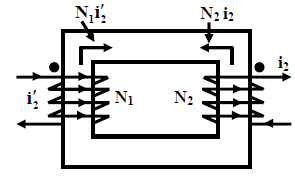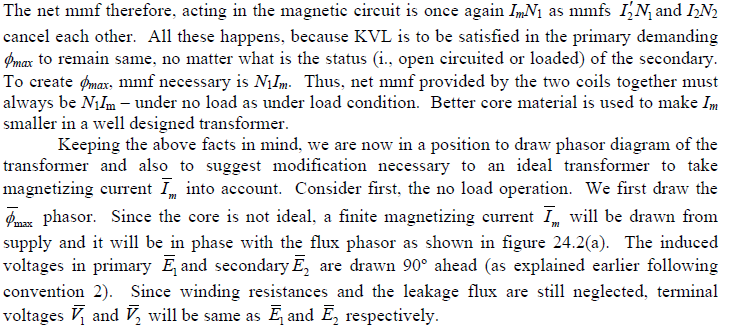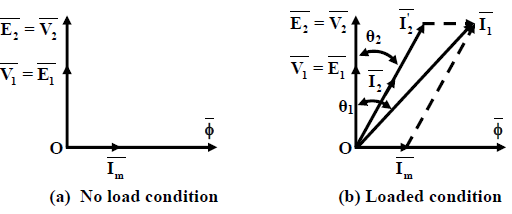Practical Transformer
Practical transformer: A practical transformer will differ from an ideal transformer in many ways. For example the core material will have finite permeability, there will be eddy current and hysteresis losses taking place in the core, there will be leakage fluxes, and finite winding resistances. We shall gradually bring the realities one by one and modify the ideal transformer to represent those factors.
Consider a transformer which requires a finite magnetizing current for establishing flux in the core. In that case, the transformer will draw this current Im even under no load condition. The level of flux in the core is decided by the voltage, frequency and number of turns of the primary and does not depend upon the nature of the core material used which is apparent from the following equation:


current drawn will be different for different core material although applied voltage, frequency and number of turns are same. Under no load condition the required amount of flux will be produced by the mmf N1 Im. In fact this amount of mmf must exist in the core of the transformer all the time, independent of the degree of loading.
Whenever secondary delivers a current I2 , The primary has to reacts by drawing extra current I’2 (called reflected current) such that I’2N1 = I2N2 and is to be satisfied at every instant. Which means that if at any instant i2 is leaving the dot terminal of secondary, i2′ will be drawn from the dot terminal of the primary. It can be easily shown that under this condition, these two mmfs (i.e, N2i2 and i2'N) will act in opposition as shown in figure 22.1. If these two mmfs also happen to be numerically equal, there can not be any flux produced in the core, due to the effect of actual secondary current I2 and the corresponding reflected current I2′
 fig 22.1
fig 22.1

 fig 24.2
fig 24.2